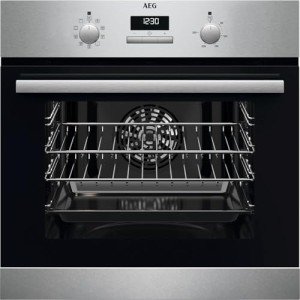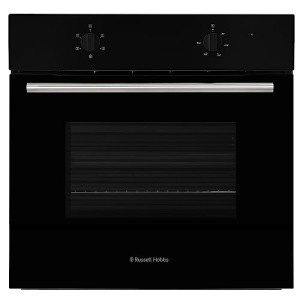
Single Oven Electric
FollowOverview
-
Founded Date agosto 5, 1971
-
Sectors Abogado
-
Posted Jobs 0
-
Viewed 31
Company Description
14 Cartoons On Single Oven To Brighten Your Day
The Ultimate Guide to Single Ovens: Features, Benefits, and FAQs
When it comes to modern kitchen home appliances, the single oven stands out as a flexible and necessary tool for any cooking lover. In today’s busy world, where benefit satisfies cooking craftsmanship, single ovens play an essential function in meal preparation. Understanding the features, advantages, and types of single ovens can streamline the procedure of picking the ideal home appliance for your kitchen. This detailed guide intends to offer a thorough take a look at single stainless Steel Ovens, their specifications, and answers to frequently asked concerns.
What is a Single Oven?
A single oven is a kitchen appliance that features one primary cooking compartment. It is created to perform numerous cooking functions such as baking, roasting, broiling, and more. Unlike double ovens, that include two different cavities, single ovens optimize area effectiveness, making them suitable for smaller sized kitchen areas or those who often prepare meals for a couple of individuals.

The Anatomy of a Single Oven
In order to appreciate the performance of a single oven, understanding its crucial components is vital:
| Component | Description |
|---|---|
| Cooking Cavity | Main area where food is positioned for cooking. |
| Control Panel | User interface for choosing cooking modes and changing temperature. |
| Heating Elements | Metal coils that create heat (often discovered at the top and bottom). |
| Oven Door | Glass panel that allows exposure into the cooking space. |
| Racks | Removable racks that accommodate different meals at various heights. |
Types of Single Ovens
Single ovens come in numerous types based on their heating techniques and styles. Here are some popular choices:
-
Conventional Ovens: Utilize gas or electricity for a traditional cooking experience. They provide constant heat for baking and roasting.
-
Convection Ovens: Equipped with a fan that circulates hot air, resulting in much faster cooking times and even heat distribution.
-
Steam Ovens: Use steam to prepare food, retaining wetness and nutrients. Suitable for much healthier cooking techniques.
-
Wall Ovens: Built into the wall to conserve space; they can boost kitchen looks while supplying functionality.
-
Microwave Ovens: While not a traditional oven, contemporary microwave ovens can also bake and roast, using benefit for quick meal preparation.

Features to Look for in a Single Oven
When purchasing a single oven, consider the following functions to guarantee you choose a device that suits your cooking requires:
-
Capacity: Ensure the oven’s size accommodates your normal cooking volume. Requirement capabilities typically range from 4.5 to 6 cubic feet.
-
Temperature Range: Look for an oven that supplies a wide temperature level range for different cooking methods.
-
Self-Cleaning Options: Self-cleaning modes bypass the requirement for severe chemicals, making maintenance easier.
-
Smart Technology: Wi-Fi-enabled designs permit remote operation and monitoring through smartphone applications.
-
Interior Lighting: Bright, incandescent or LED lighting assists monitor your food without opening the door.
Average Sizes and Capacities of Single Ovens
| Type | Average Capacity (cubic ft) | Width (inches) | Height (inches) |
|---|---|---|---|
| Standard Conventional | 5.0 – 6.0 | 30 | 28 – 30 |
| Compact/Apartment Size | 3.0 – 4.0 | 24 | 28 – 30 |
| Wall Oven | 4.5 – 5.0 | 24 – 30 | 28 – 30 |
Benefits of Using a Single Oven
Purchasing a single oven offers various benefits for both amateur cooks and skilled chefs alike:
-
Space Efficiency: A single oven inhabits less space than a double oven, making it ideal for smaller sized kitchens.
-
Cost-Effective: Generally more economical compared to double ovens, both in initial purchase and energy consumption.
-
Flexibility: Capable of performing numerous cooking strategies, making it suitable for a range of dishes.
-
Reduce of Use: With a smaller cooking location, heat distribution tends to be more efficient, streamlining the cooking procedure.
-
Upkeep: Fewer elements indicate less complexity when it comes to cleaning and repair work.
Frequently Asked Questions (FAQs)
What is the average life-span of a single oven?
A single oven usually lasts in between 10 to 15 years, depending on use, upkeep, and the quality of the device.
How can a single oven save energy?
Single ovens require less power than double ovens, and numerous designs are created with energy effectiveness in mind, minimizing general energy usage.
Can a convection oven change a basic oven?
Yes, a convection oven can replace a basic oven as it uses similar cooking functions along with quicker cooking times.
Are single ovens appropriate for large families?
While single ovens can accommodate a good quantity of food, larger families may find that a double oven or an extra single oven fits their needs better.
How typically should I clean my single oven?
It is suggested to clean your oven every 3 to six months, depending upon usage, to maintain health and efficiency, specifically with designs that include self-cleaning alternatives.
Is installation challenging for a single oven?
Many single ovens come with straightforward setup directions. Nevertheless, seeking advice from a professional is recommended for safe and proper setup, especially for gas ovens.
The single oven remains a foundation appliance in kitchens worldwide. Its versatility, performance, and space-saving design make it an attractive option for many homes. Whether you are a periodic cook or a cooking aficionado, selecting the best single oven can significantly improve your cooking experience. With the information shared in this guide, possible buyers can make an informed decision, guaranteeing they choose an oven that best suits their cooking needs and lifestyle.

